The Weekly Anthropocene: Geothermal Energy
A Deep Dive into the Wild, Weird World of Humanity and its Biosphere.
The Background: Failure to Launch
Back when this writer was a wee lad, learning about renewable energy in the first decade of the 21st century, it was often described as a triad of technologies: solar, wind, and geothermal. Today, you’re much more likely to hear “wind and solar”, or perhaps “wind, water, and solar (WWS)” to include hydropower. Why is this?
In the 2010s, wind and solar boomed enormously, becoming very cheap very fast, revolutionizing the world’s energy market and looking set to dominate new energy capacity built through the 2020s and beyond. It’s one of the great technological success stories of our time, and gives the world a fighting chance to avoid truly catastrophic climate change. You’ve heard this story before, often in this newsletter. Solar is now the cheapest electricity in the world. “Renewables are set to account for almost 95% of the increase in global power capacity through 2026, with solar PV alone providing more than half.” Wind energy grew 1,312.21% globally from 2005 to 2021, from 58.41 to 824.87 gigawatts. Installed solar energy capacity globally grew even more exponentially, from 4.55 GW in 2005 to 843.09 GW in 2021, a shocking 18,429.5% increase. That’s pretty amazing!
Well, geothermal…did not do that.
See the chart above from the US Energy Information Administration, showing the huge renewables boom of the 2010s? Wind is green, solar is yellow, and geothermal is that tiny little orange stripe below wind.
Note also the above chart from IRENA (the International Renewable Energy Agency), showing renewable electricity generation (note: not the same thing as capacity) for the whole world. (Note that in both of the above charts hydro is large but not really growing much, while solar and wind are growing rapidly). Here, geothermal is the tiny red line on the top.
And this chart from Our World in Data (also based on IRENA data) shows global investment in renewable energy in USD per year during the key period of the early 2010s when solar and wind skyrocketed into exponential growth. Wind is light blue, solar is yellow, and geothermal is that tiny red line on the top.
So: what the heck happened to geothermal? Why didn’t it grow like wind and solar?
Large-scale geothermal energy generation has historically worked by either tapping into natural hot water sources underground and using that steam to turn turbines, or just using it directly as a source of hot water to warm buildings. The first problem for geothermal is just an inherent physics one: there’s wind and solar availability basically everywhere (check out the global solar and wind atlases) but geothermal is very geographically limited. Available “shallow” geothermal energy, from within a few kilometers of the surface, is generally only worth generating power from in particularly hot (generally volcanic) areas1. (This is an oversimplification of a complicated, multi-variable spectrum of geothermal potential, that includes the specifics of local geology, regulations, funding, and lots of other factors). Geothermal energy heats 90% of the houses and provides around 20% of the electricity in tectonically active Iceland, as Iceland can tap into over 600 natural hot spring areas just 200 to 2,000 meters below ground. California has by far the most geothermal capacity in the United States, with 40 geothermal plants providing 5.72% of its electricity in 2021, since it sits on the Pacific “Ring of Fire” and has some good steam deposits. Yet geothermal growth has stalled out in the US for a decade, even on the Pacific coast where’s there’s still plenty of untapped potential.
Because the second problem for geothermal is that no miracles have yet occurred for this technology, and the 2010s were rocked by the “twin miracles” of rapid technological improvement and corresponding price declines for both solar and wind power. (Below is one of this writer’s favorite graphs of all time)2.
Geothermal just couldn’t compete for investor dollars, activist support, utility interest, or government R&D investment with two energy generation technologies that were undergoing once-in-a-century exponential improvement curves. And frankly, nor should it have: wind and solar were clearly the right bet. In a way, the recent history of geothermal power functions as a “dark alternate history” of solar and wind: if solar and wind’s technological breakthroughs had never occurred, all renewable energy sources would likely have plodded along, growing painfully slowly without becoming a serious competitor to fossil fuels.
The East African Rift Valley
However, there is one place where geothermal is a promising source of renewable energy, and it’s a part of the world where that is badly needed: the East African Rift Valley.
The East African Rift Valley is a “developing divergent tectonic plate boundary” running under the orange countries above. It’s basically the continent of Africa beginning to split off East Africa as a smaller, island continent, a tens of millions of years-long process currently occurring at the rate of 6-7 millimeters per year. That titanic movement produces a lot of energy. IRENA estimates that the East African Rift countries have immense geothermal potential, and outlines potential sites across the region in an excellent 2021 report.
One country has already started capitalizing on this natural geothermal wealth: Kenya. The chart above from the always-excellent Our World In Data shows electricity generation in Kenya. Geothermal is included in the “other renewables” category on their charts, and it’s a surprisingly dominant player in Kenya’s fast-growing grid. (Only about 71% of Kenyans have access to electricity as of 2020, but that’s up from only about 15% of Kenyans in 2000). Geothermal plants generated over 38% of Kenya’s electricity as of 2021, and that share is growing fast as new geothermal capacity is added regularly. The newly elected Kenyan President William Ruto reaffirmed the country’s commitment to reach 100% clean energy by 2030, and Kenya plans to double its geothermal generating capacity by 2030 to help make that happen.
In a country as biologically rich as Kenya, renewables development has led to controversial encounters with local wildlife. At least in one case, geothermal development has clearly negatively affected endangered vulture species through through power line collisions and habitat displacement. Striking an acceptable balance will be a long-term endeavor, but there some positive signs of healthy coexistence taking shape: for example, the steam pipes of Kenya’s flagship Olkaria geothermal facility are regularly elevated to make sure the tallest giraffes in the area can pass under them. (Pictured above: Maasai giraffes under geothermal power lines and zebras drinking from a leak in a water pipe connected to a geothermal well, both near Olkaria).
Furthermore, Kenya is already actively working to export its geothermal expertise to other East African Rift Valley countries. KenGen, the Kenyan state-owned energy company that builds and runs Kenya’s geothermal plants, has already drilled 22 geothermal wells in Ethiopia, has clinched a contract and started new drilling for geothermal development in Djibouti, and is in talks and/or conducting preliminary studies with Rwanda, the Democratic Republic of the Congo, and the Comoros. This is really quite excellent news: Kenya has already experienced a massive rise in living standards primarily powered by clean, renewable geothermal energy, and now this success is set to spread across a region of the world that sorely needs it.
Enhanced & Advanced Geothermal: The Next Big Thing?
So, that’s about it for geothermal, huh? It’s nice that it found a helpful role in a volcanic and energy-hungry part of the world, but it’ll ultimately be a bit player in the global renewables revolution, doomed to be outshined by wind and solar everywhere that doesn’t have shallowly buried steam deposits.
That seemed to be the case until recently. But in the 2020s, some new technological developments have shaken up the geothermal field: enhanced geothermal systems, or EGS, and advanced geothermal systems, or AGS3. Broadly, EGS (pictured above) works by pumping water underground with an "injection well," deep enough that it heats up and breaks the rock to form a pocket of water4, then using a second "production well" right next to it to suck up that hot water and use it for heat and/or turning turbines for electricity, like traditional geothermal. AGS is even more direct, just running the water down in a tube until it heats up just the ambient heat of the rock around the tube, then looping the tube back up to the surface, so you get hot water with no contact with the surrounding rock.
These are technologies very much in their infancy, akin to solar power in, say, the 1970s: they’ve been tested and found to work in real-world conditions but never commercially developed for profit (yet). Still, just the prospect of EGS and AGS is huge for geothermal, because they’re essentially creating your own hot water deposit where there isn’t one naturally, so it opens up anywhere in the world for geothermal development, decoupling it from the volcanic-area limitation. The flip side is that requires much more heavy-duty deep well drilling, because in non-volcanic areas you have to drill deeper to get hot rock.
But wait a minute, lots of deep drilled wells and pumping equipment…don’t we have some of that lying around?
EGS and AGS are indeed very close to oil and gas drilling in terms of technology and required skill sets, and governments and industry are taking notice. The Department of Energy is using funding from 2021’s Bipartisan Infrastructure Law to support four pilot EGS projects in the United States that are attempting to repurpose existing oil and gas wells for geothermal water heating, saving the expense and regulatory hassle of drilling new wells. And in other hopeful signs, Mukul Sharma, a famous oil and gas engineer known as the “Frack King” who was instrumental in the fracked gas boom of the early 2010s, has changed careers to start an EGS startup, Geothermix, which is among the four new DOE grantees. The wave of new renewables funding and tax credits from the magisterial Bipartisan Infrastructure Law and Inflation Reduction Act may well incentivize oil and gas companies to start investing more in advanced geothermal, which advocates hope will become a “port in a storm” for a drilling-focused workforce and industry that would otherwise be on the way out.
This is all very, very early days at the moment, but there’s a lot of potential. A vast expansion in EGS and AGS geothermal power would also have the added bonus of providing employment to thousands of specialized drilling technicians and engineers who might otherwise be displaced by the renewables revolution, keeping previously oil and gas-dependent communities alive. Furthermore, it would function as “base load power”, always available at a consistent rate, without needing to be stored and released via batteries or pumped hydro like wind and solar. That could make advanced geothermal a perfect complement to its fellow renewables, and remove fossil fuels from the grid all the quicker. If we’re lucky and smart, the 2020s and 2030s may yet see the meteoric rise of a third “miracle” clean energy technology! 5
Note: when people think of “power underground,” they often think of the Earth’s core, which indeed has way more energy than all of human civilization needs, but it’s completely inaccessible with current technology. The deepest point humans have ever reached (with the Soviet Kola Borehole) is less than 8 miles deep, the outer core begins at around 1,795 miles deep.
I can’t find any good statistics on the price of geothermal electricity generation over time, itself a measure of its obscurity. However, given that drilling and water-pipe technologies have not experienced revolutionary innovations recently, my educated guess is that it’s stayed more or less the same. It definitely hasn’t decreased in price at anywhere close to the speed of wind and solar.
“Enhanced” and “advanced” geothermal really sound like they should be synonyms, but people have agreed that they refer to different things for some reason. I would have gone with “injected” and “looped” geothermal, maybe?
In practice this is a messy fragmented rock/water slush, but in practice we get water when we drill there; sort of like how a straw in a drink full of ice cubes only picks up the water.
With the prospect of use-anywhere, baseload-power, driller-employing geothermal dangling before our eyes, plus next-generation solar and wind technologies like perovskite panels and floating turbines under development, the future for renewable energy has truly never looked brighter.




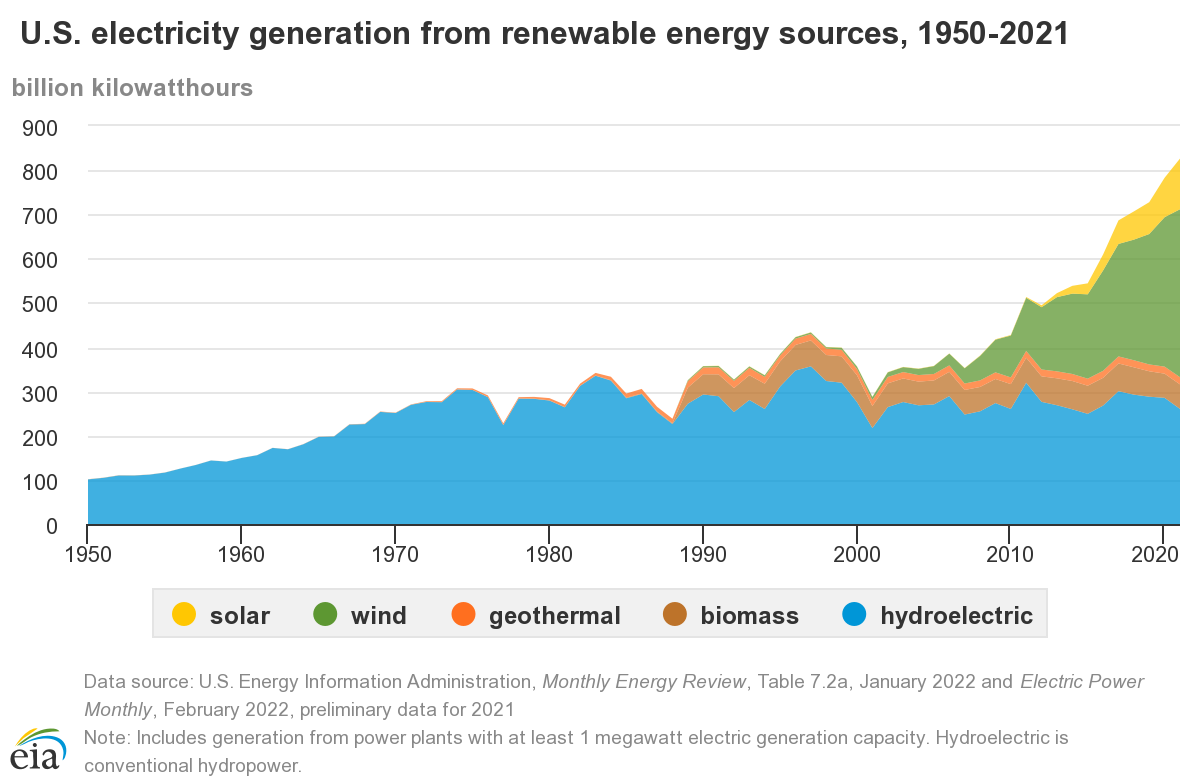



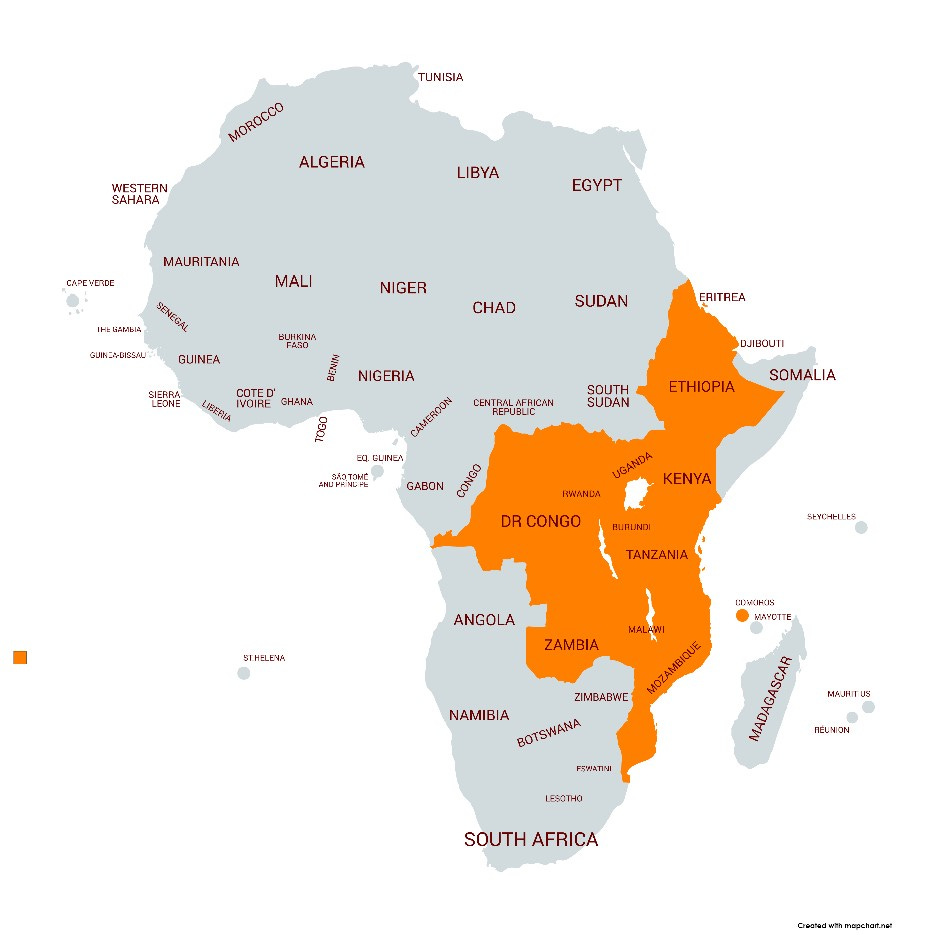

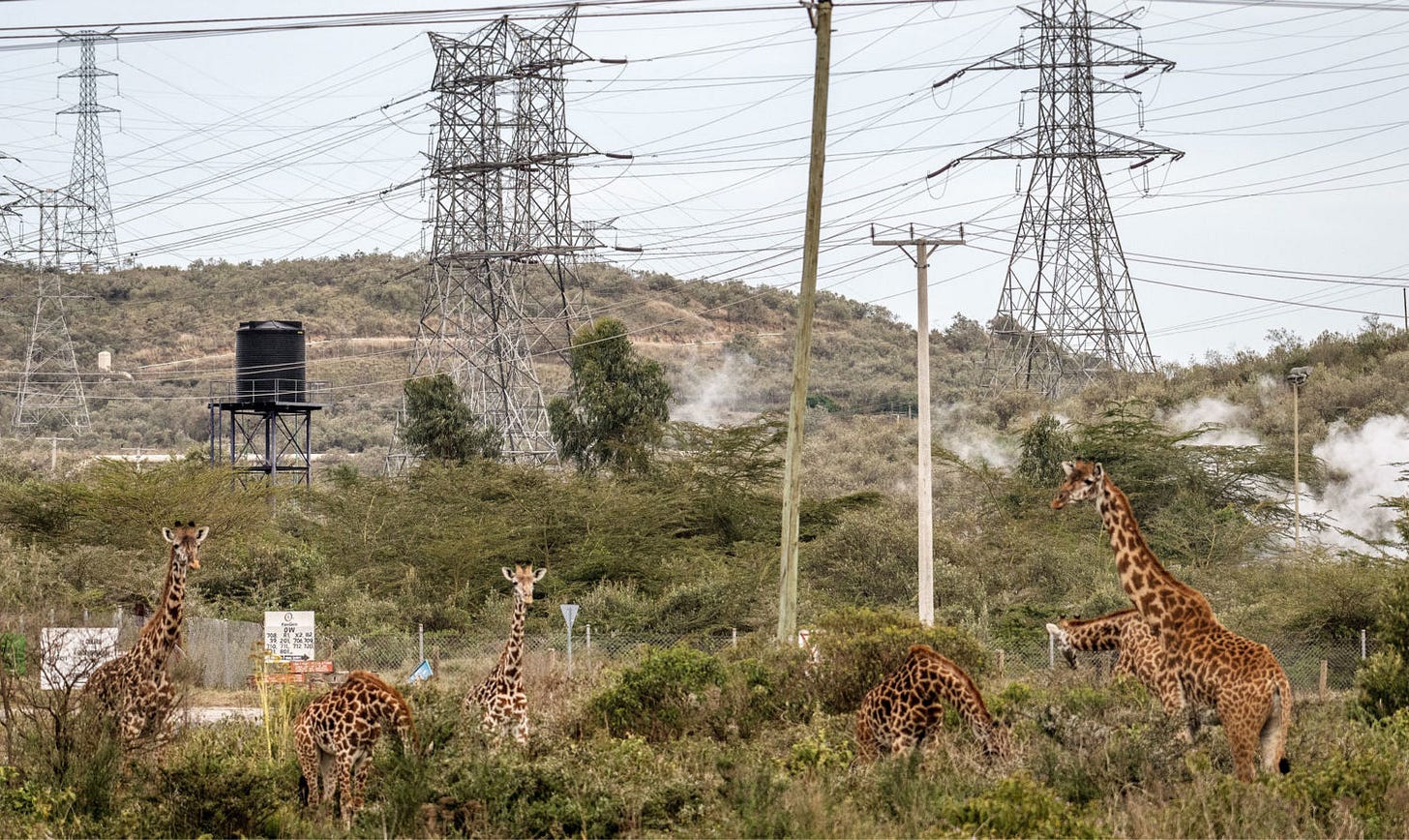
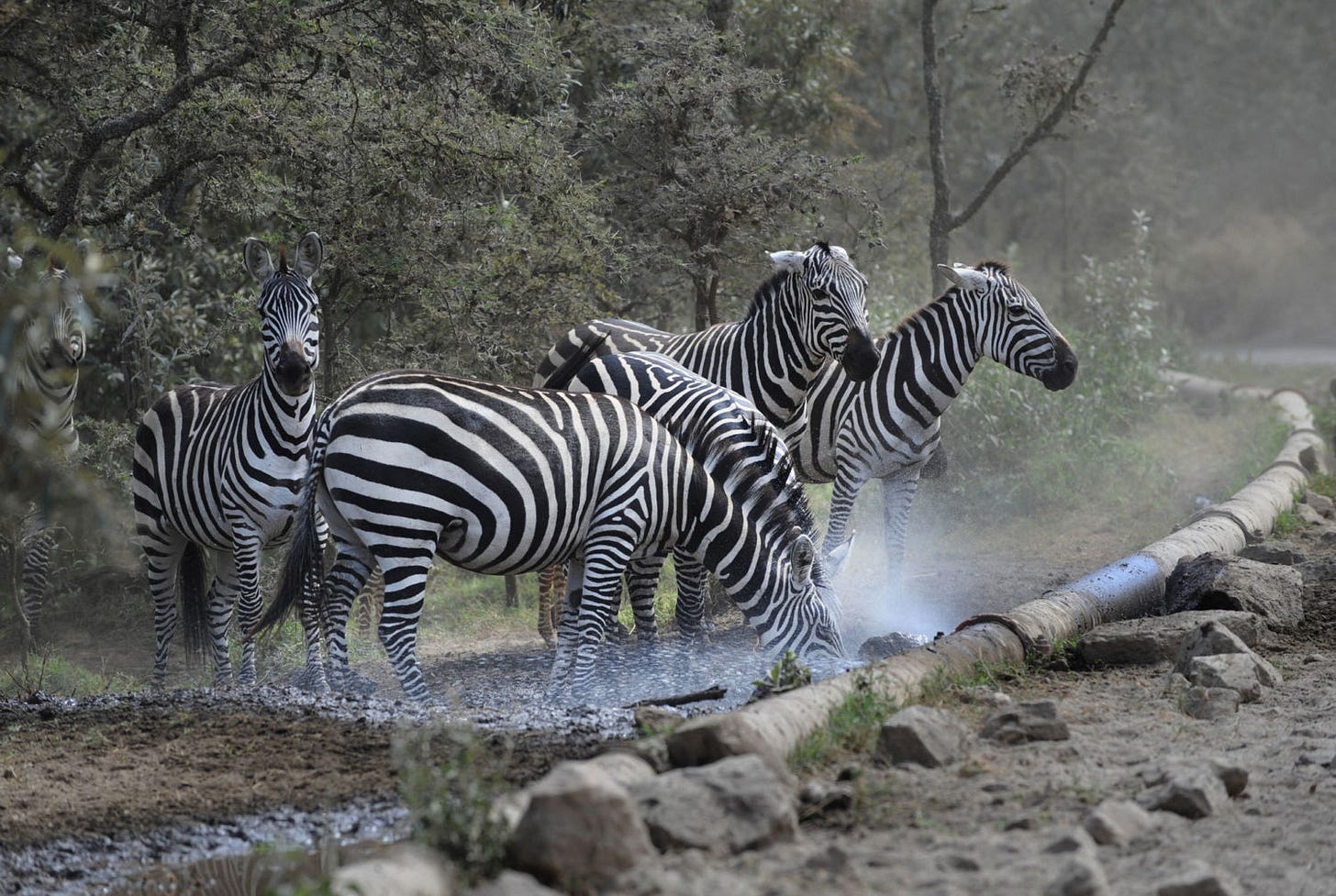
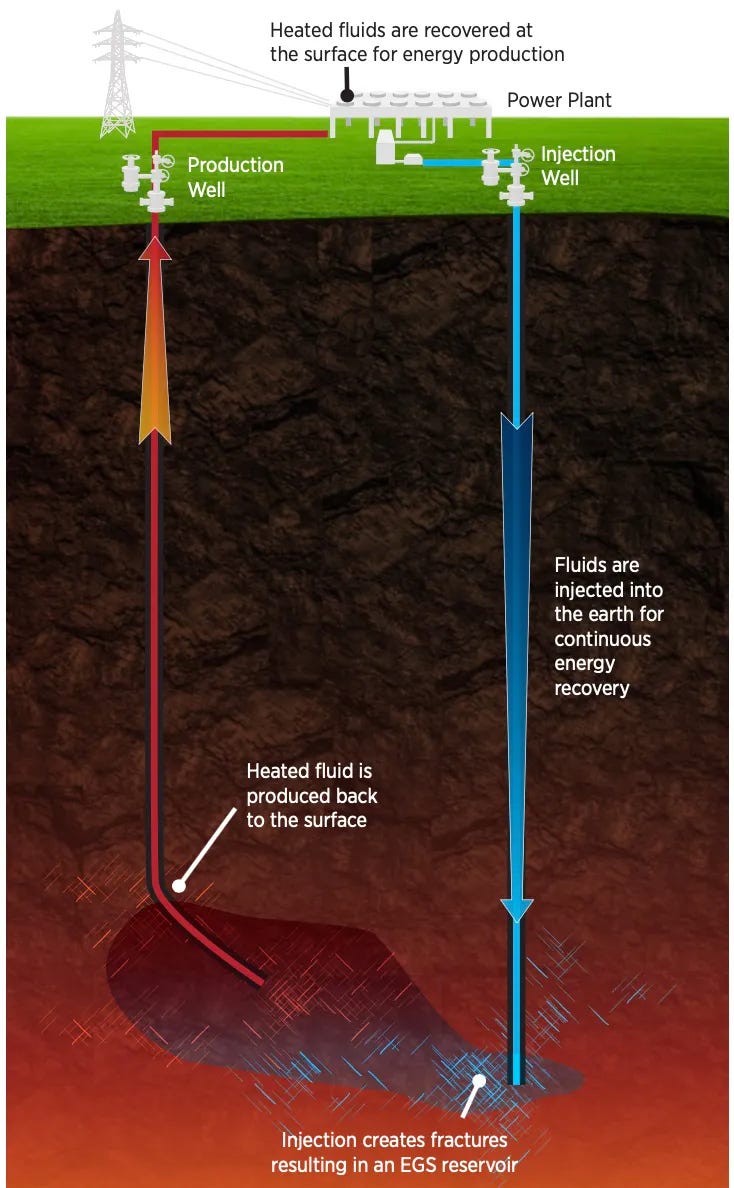
Thx for pointing this article out to me here in the future (October 4, 2023) great info! Geothermal's future is unlimited as we shall all see. Using heating to turbine to electricity to line of sight laser/maser/graser to ground or satellite receptor and back to electricity, one geothermal site can provide power to a region! With efficient conversion and about a fifty years build time, the Yellowstone magma plume could power the entire West in perpetuity. It would be like fifty Bonneville Dams! All we would need would be a reliable water supply and Lake Yellowstone is a drought-proof, very deep and enormous catchment basin, if ground waters for some reason disappeared.
We need to find a way to map the upper mantle plumes...they don't always have surface thermal features indicating their presence. There might be several east of the Rockies in the U.S. we can tap by superdeep drilling.